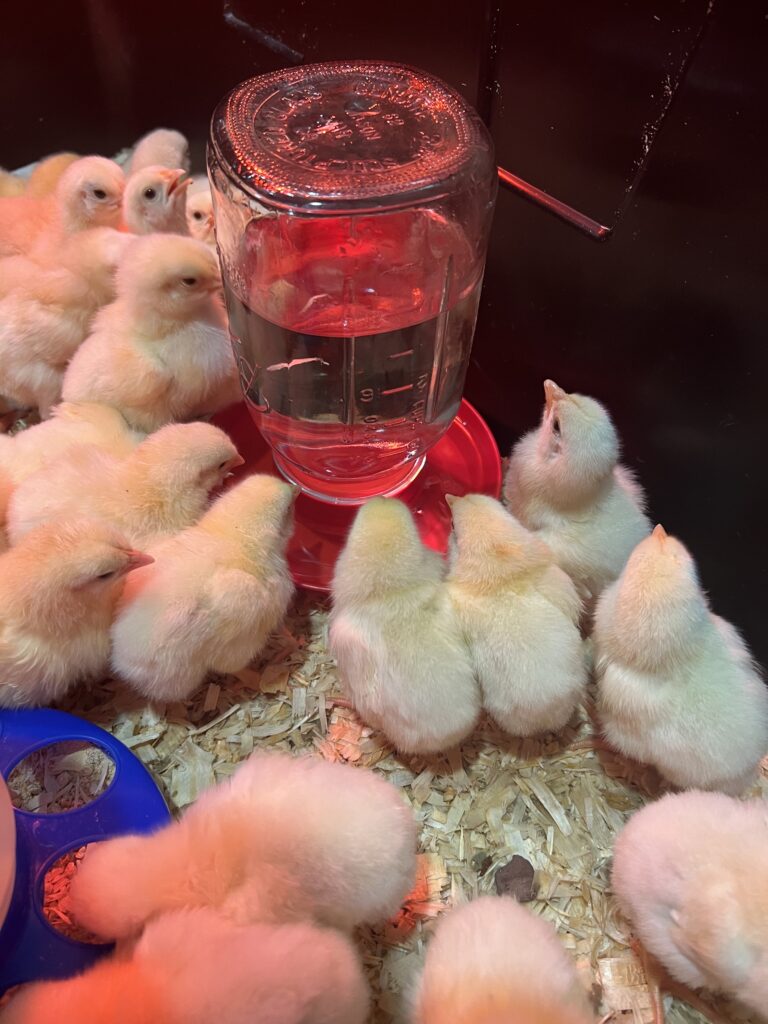4-H Partners With White Oak to Hatch Chicks and Emerge Butterflies
go.ncsu.edu/readext?939001
en Español / em Português
El inglés es el idioma de control de esta página. En la medida en que haya algún conflicto entre la traducción al inglés y la traducción, el inglés prevalece.
Al hacer clic en el enlace de traducción se activa un servicio de traducción gratuito para convertir la página al español. Al igual que con cualquier traducción por Internet, la conversión no es sensible al contexto y puede que no traduzca el texto en su significado original. NC State Extension no garantiza la exactitud del texto traducido. Por favor, tenga en cuenta que algunas aplicaciones y/o servicios pueden no funcionar como se espera cuando se traducen.
Português
Inglês é o idioma de controle desta página. Na medida que haja algum conflito entre o texto original em Inglês e a tradução, o Inglês prevalece.
Ao clicar no link de tradução, um serviço gratuito de tradução será ativado para converter a página para o Português. Como em qualquer tradução pela internet, a conversão não é sensivel ao contexto e pode não ocorrer a tradução para o significado orginal. O serviço de Extensão da Carolina do Norte (NC State Extension) não garante a exatidão do texto traduzido. Por favor, observe que algumas funções ou serviços podem não funcionar como esperado após a tradução.
English
English is the controlling language of this page. To the extent there is any conflict between the English text and the translation, English controls.
Clicking on the translation link activates a free translation service to convert the page to Spanish. As with any Internet translation, the conversion is not context-sensitive and may not translate the text to its original meaning. NC State Extension does not guarantee the accuracy of the translated text. Please note that some applications and/or services may not function as expected when translated.
Collapse ▲Second graders at White Oak Elementary recently participated in two 4-H projects – embryology and emerging butterflies! These hand-on learning opportunities teach youth about the life cycles of chickens and butterflies.
For embryology, each classroom was equipped with fertile eggs and an incubator. Students learned about what was happening during each day of the 21-day incubation period. On day 21 the chicks began to pip (the first break in the shell by the hatching bird). After the chickens hatched and were fully dry, they were then moved to heated brooder boxes.
For their Winged Wonders (emerging butterflies) project, each classroom was given four cups of Painted Lady Butterfly larvae. With this project, “youth will observe the wonders of the natural world unfolding in front of them by raising painted lady butterflies from larva through adulthood. Youth will experience the mystery of the butterfly life cycle while engaging in hands-on activities that explore concepts of insect structures and functions, compare insect behaviors and life cycles, and demonstrate the role everyone can play in environmental stewardship.” Over the course of a few weeks, each larva eats and grows, forms a chrysalis, and then emerges as an adult!
Chowan County 4-H is always so “egg-cited” to provide these educational opportunities to the youth in our community. For more information on Chowan County 4-H, please contact Camaryn Byrum at cibyrum@ncsu.edu.





